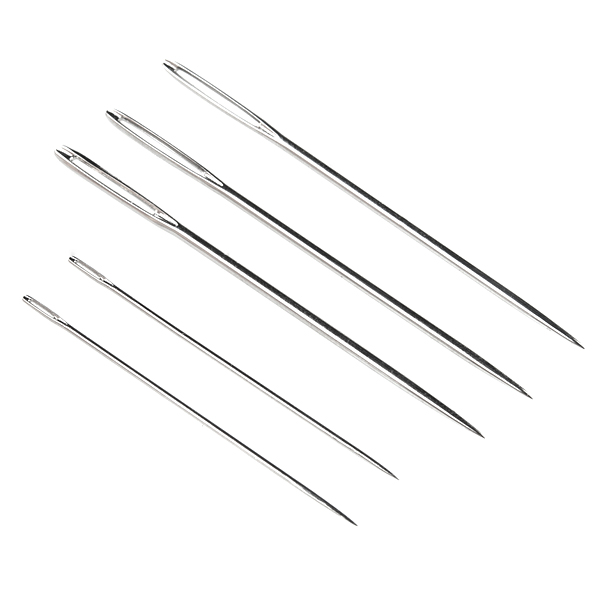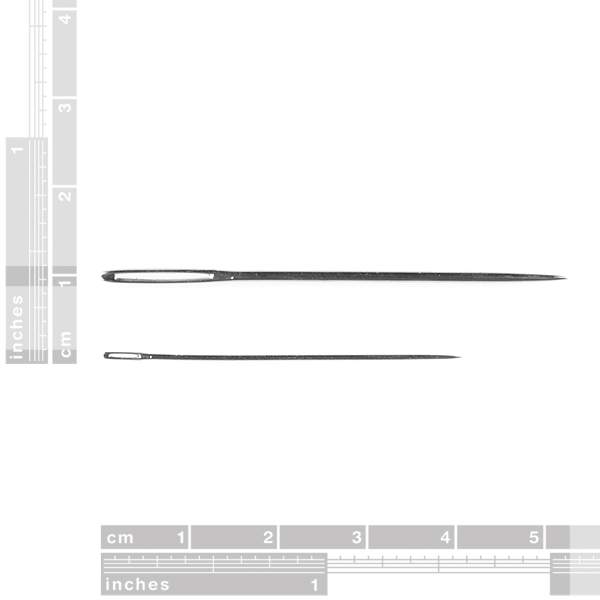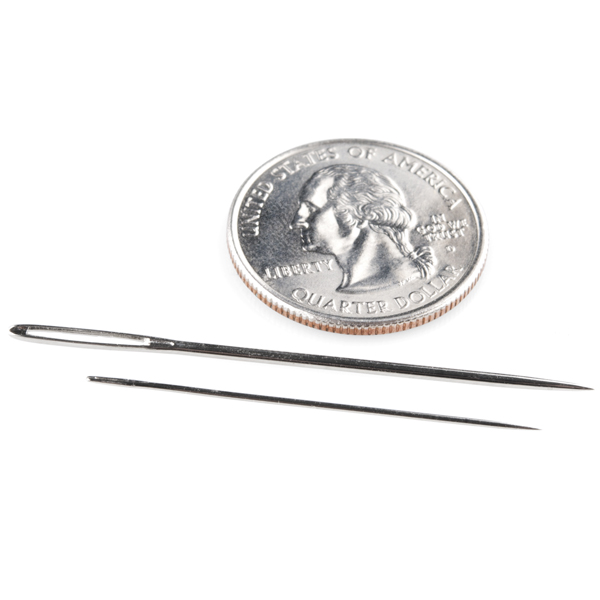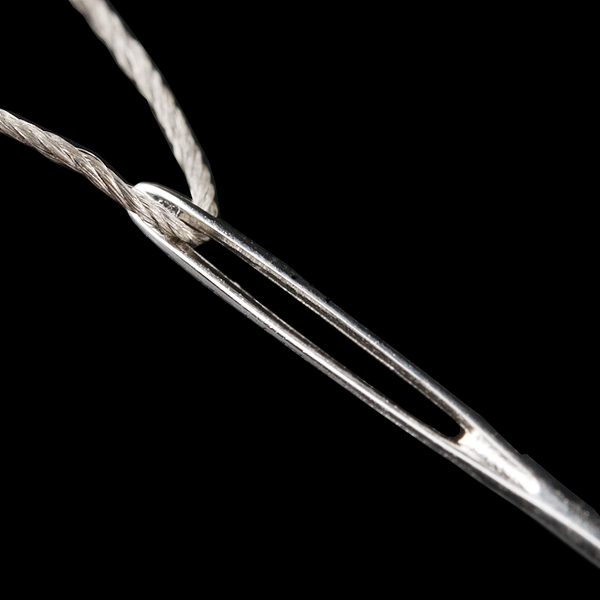This set of sewing needles is a must-have when stitching together your next e-textile project. Each envelope contains three 48mm, 1.23mm thick needles and two smaller 39mm, 0.67mm thick needles. The eye of each size needle is large enough to easily thread with our conductive thread.
Needle Set Product Help and Resources
LDK Experiment 5: Make Your Own Switch
October 2, 2013
Learn to create and integrate your own handmade switch into an e-textile circuit.
LilyPad Basics: E-Sewing
December 17, 2016
Learn how to use conductive thread with LilyPad components.
Wireless Glove Controller
April 24, 2019
Build a wireless glove controller with Arduinos to trigger an LED using XBees!
EL Wire Hoodie
October 24, 2018
In this tutorial, we will sew standard electroluminescent (EL) wire to a hoodie.
EL Wire Pants
July 18, 2019
In this tutorial, we will sew standard electroluminescent (EL) wire to a pair of pants.
Wireless Gesture Controlled Robot
April 25, 2019
Control the RedBot wirelessly based on the movement of your hand using an accelerometer, Arduino, and XBees!
Core Skill: DIY
Whether it's for assembling a kit, hacking an enclosure, or creating your own parts; the DIY skill is all about knowing how to use tools and the techniques associated with them.
Skill Level: Noob - Basic assembly is required. You may need to provide your own basic tools like a screwdriver, hammer or scissors. Power tools or custom parts are not required. Instructions will be included and easy to follow. Sewing may be required, but only with included patterns.
See all skill levels
Comments
Looking for answers to technical questions?
We welcome your comments and suggestions below. However, if you are looking for solutions to technical questions please see our Technical Assistance page.
Customer Reviews
No reviews yet.





-------------------- Tech Support Tips/Troubleshooting/Common Issues --------------------
Needle Sizes
The bigger needles are easier and faster to thread than the smaller ones. Depend on the how many layers of material you are using and the part you are attaching, it might be better to use the smaller needle. For example, if you are trying to secure the snap assortment pack [ https://www.sparkfun.com/products/11347 ] to a piece of fabric, it would be better to use the smaller needle because of the size of the mounting holes.
Hi, What is the conventional size of these needles, please? Eg size 22? Thank you!
Will these needles fit through the sewable coin cell battery holders used with aniomagic products?
How well would these go through Lilypad contacts?
Pretty easily. Lilypad holes are at minimum 2.5mm diameter, more than twice the thickness of the thicker needle in this kit. I'd use the smaller one unless you're working with stiff fabric, though.
Will solder stick to these needles?
I'm thinking super fine probe tips, for example for a logic probe.
I haven't tried, but if you applied some flux and got it hot enough, you should be able to solder wire to it.
You might have to rough up the metal a bit, but it should be entirely possible.
You might also ask if they are coated with a thin layer of paint like some I've seen.
If they are coated with a lacquer (which I doubt), that can be taken off with a lighter. I've used that method to take the lacquer off of lacquer coated wire.
If not, you could try to square up the shaft a little with sand paper and wire-wrap them.